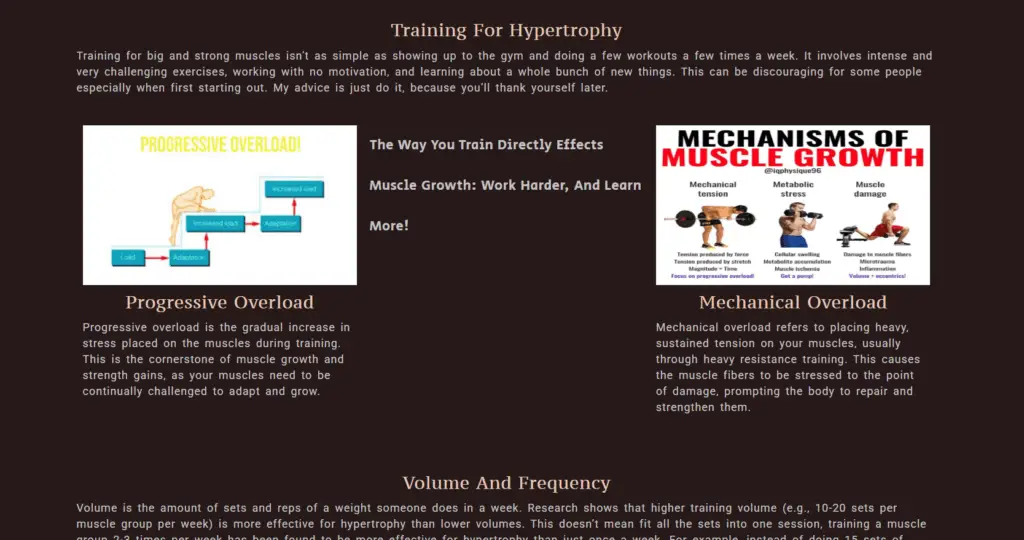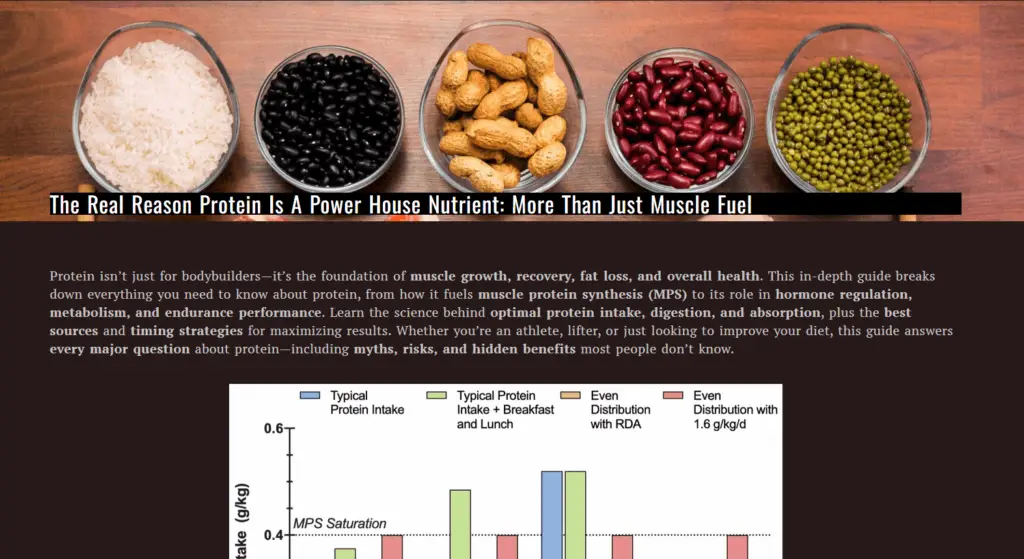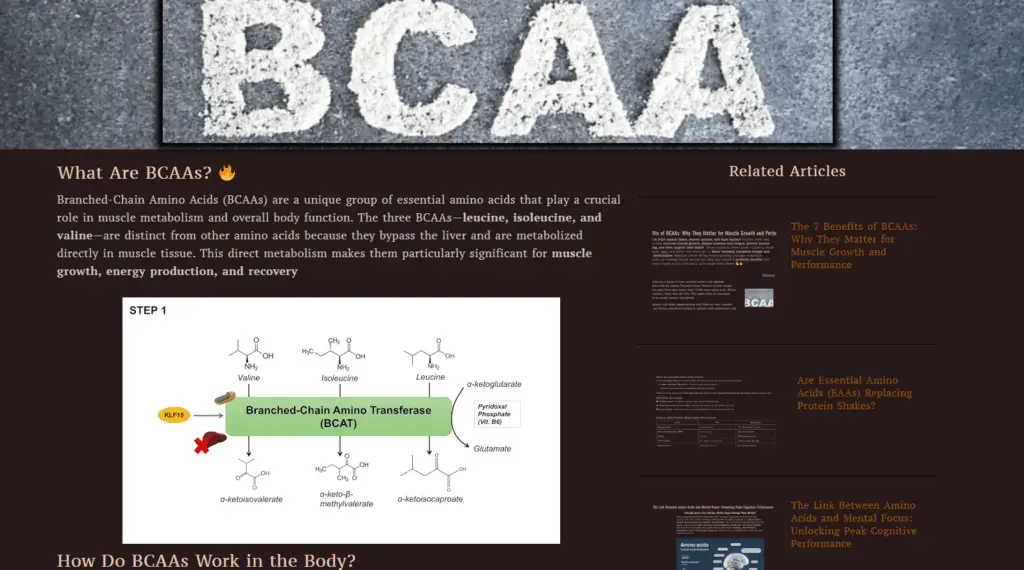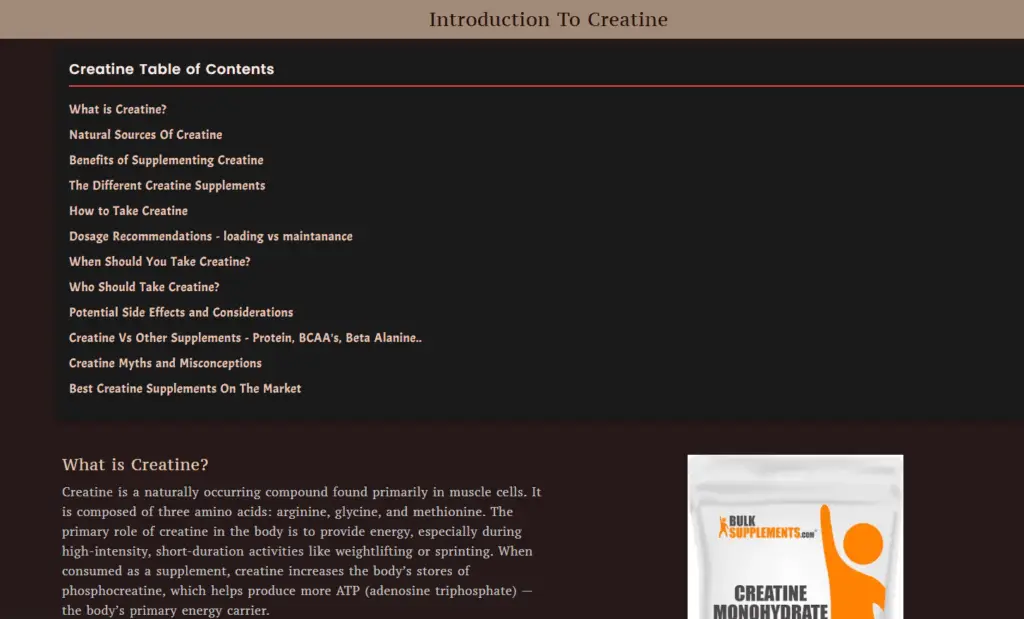Muscle Science: The Power of Force Production and Growth - Key Mechanisms Behind Strength
Are you trying to gain as much muscle as possible? Muscle growth isn’t just about lifting heavier weights—it’s a complex biological process that involves microscopic damage, cellular repair, and neurological adaptation. From the sarcoplasm that fuels contractions to the neural pathways that fire each rep, every detail matters. If you want to maximize strength, hypertrophy, and endurance, you need to understand how muscle fibers truly function.
This deep dive on muscle science will break down everything—mechanical tension, metabolic stress, recovery, muscle structure, neuromuscular adaptation, different training strategies, and the science behind every rep you perform that way you can understand bodybuilding by science.

The Complete Science of Muscle Growth: Sarcoplasm, Fibers, and Adaptations
Table Of Contents
1.1 Sarcolemma
1.2 Sarcoplasm
1.3 Myofibrils- 1.3.1 Sarcomeres
- 1.3.2 Actin Filaments (Thin Filaments)
- 1.3.3 Myosin Filaments (Thick Filaments)
- 1.3.4 Titin
- 1.3.5 Nebulin
Molecular Mechanisms of Muscle Contraction
2.1 Sliding Filament Theory
2.2 Role of Calcium in Contraction
2.3 Residual Force Enhancement & Depression
2.4 Eccentric vs. Concentric ContractionsNeuromuscular Adaptations & Motor Unit Recruitment
3.1 Motor Unit Recruitment
3.2 Neural Adaptations to TrainingHypertrophy: Mechanical Tension vs. Metabolic Stress
4.1 Mechanical Tension
4.2 Metabolic StressRecovery & Adaptation
5.1 How Recovery Works
5.2 Role of Satellite Cells
5.3 Heat Production in RecoveryNutritional Recommendations
6.1 Macronutrients for Muscle Growth
6.2 Micronutrients & Their RolesTraining Strategies for Optimal Hypertrophy
7.1 Strength-Focused Training
7.2 Hypertrophy-Focused Training
7.3 Lengthened Partial Reps & Isometrics
7.4 Eccentric Training & Tempo ControlFuture Directions & Unexplored Frontiers
8.1 Potential of Sarcoplasmic Expansion
8.2 Neural Efficiency in Strength Gains
8.3 Muscle Elasticity & Performance
1. Structure of a Muscle Fiber
1.1 Sarcolemma
The sarcolemma is the membrane surrounding a muscle cell. It transmits electrical signals from the nervous system to activate contractions and provides structural support.
1.2 Sarcoplasm
Sarcoplasm is the cytoplasm of a muscle cell. It surrounds the myofibrils and contains various organelles, enzymes, and energy substrates, including glycogen and oxygen-binding proteins like myoglobin. The sarcoplasm plays a vital role in providing energy for muscle contractions, facilitating metabolic processes, and aiding in the transport of nutrients and waste products within the muscle cell. It also helps in the storage and release of calcium ions, which are crucial for muscle contraction.
1.3 Myofibrils
Myofibrils are long, thread-like structures found within muscle fibers (cells). They are made up of repeating units called sarcomeres, which contain the actin and myosin filaments responsible for muscle contraction. Myofibrils are the contractile components of muscle tissue, and when they shorten during contraction, the entire muscle contracts. Multiple myofibrils are arranged in parallel within a muscle fiber, contributing to the muscle’s overall strength and function.

1.3.1 Sarcomeres
Sarcomeres are the basic structural and functional units of muscle fibers, responsible for muscle contraction. They are made up of overlapping actin (thin) and myosin (thick) filaments, arranged in a repeating pattern along the length of the muscle fiber.
Each sarcomere is bordered by Z-discs, which anchor the actin filaments. The area where actin and myosin overlap is called the A-band, while the I-band contains only actin filaments. When a muscle contracts, the sarcomere shortens as the actin filaments slide over the myosin filaments, causing the muscle to produce force. The repeating arrangement of sarcomeres gives muscle tissue its striated appearance.
1.3.2 Actin Filaments (Thin Filaments)
Actin filaments (thin filaments) are protein structures found in muscle cells that play a crucial role in muscle contraction. They are primarily composed of actin, a globular protein that links together to form long, thin strands. These filaments are anchored to the Z-discs at both ends of the sarcomere and extend toward the center.
During muscle contraction, myosin (thick filaments) binds to actin filaments through cross-bridges, and pulls the actin filaments toward the center of the sarcomere. This process causes the sarcomere to shorten, resulting in muscle contraction. Actin filaments also serve as tracks for the myosin heads to move along, enabling the sliding filament mechanism.
1.3.3 Myosin Filaments (Thick Filaments)
Myosin filaments (thick filaments) are large protein structures in muscle cells that play a central role in muscle contraction. They are primarily composed of myosin, a motor protein with long, thick strands and heads that protrude outward. These myosin heads interact with the actin filaments (thin filaments) to generate force.
During contraction, myosin heads attach to binding sites on the actin filaments and pull them toward the center of the sarcomere, using energy from ATP. This action shortens the sarcomere and leads to muscle contraction. Myosin filaments are positioned in the middle of the sarcomere, and their heads extend into the area where they can interact with actin, enabling the sliding filament mechanism to occur.
1.3.4 Titin
Titin is a large protein that acts as a molecular spring in muscle fibers. It spans from the Z-disc to the M-line in the sarcomere, connecting actin and myosin filaments. Titin helps maintain the structural integrity of the sarcomere, providing elasticity and stability during muscle contraction and relaxation. It also contributes to muscle’s ability to stretch and return to its resting length.
1.3.5 Nebulin
Nebulin is a long, thin protein that runs alongside actin filaments in the sarcomere. It helps regulate the length of the actin filaments and plays a role in stabilizing their structure. Nebulin also assists in the proper alignment of the actin filaments during muscle contraction.
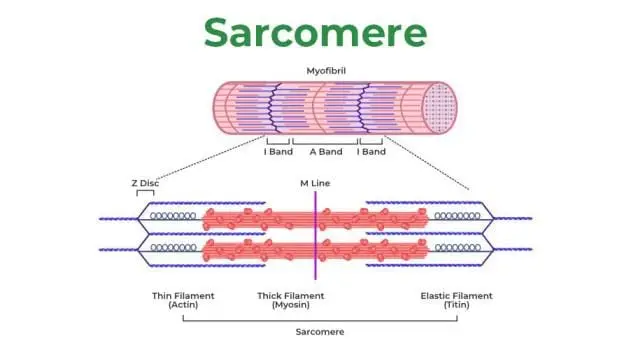
Related Articles
2. Molecular Mechanisms of Muscle Contraction
2.1 Sliding Filament Theory
The Sliding Filament Theory explains how muscles contract at the cellular level. It states that muscle contraction occurs when the thin filaments (actin) slide past the thick filaments (myosin) within the muscle fiber, shortening the sarcomere, which is the basic unit of muscle contraction.
When a muscle receives a contraction signal, calcium is released, allowing myosin heads to bind to the actin filaments. The myosin heads then pull the actin filaments toward the center of the sarcomere, using energy from ATP. This sliding action causes the muscle to shorten, producing force. Once the signal stops, calcium is pumped back into the sarcoplasmic reticulum, and the muscle relaxes as the actin and myosin filaments return to their resting positions.
2.2 Role of Calcium in Contraction
Calcium plays a key role in muscle contraction by triggering the interaction between actin and myosin, the proteins responsible for muscle movement. When a muscle receives a signal to contract, calcium is released from the sarcoplasmic reticulum into the muscle cells. Calcium binds to troponin, which shifts tropomyosin, exposing the binding sites on actin. This allows myosin to attach to actin, leading to muscle contraction. After contraction, calcium is pumped back into the sarcoplasmic reticulum, allowing the muscle to relax.
2.3 Residual Force Enhancement & Depression
Enhancement refers to the increased force a muscle produces after being stretched, improving contraction efficiency. This phenomenon is known as stretch-shortening cycle (SSC), where the muscle is first stretched, and then it contracts more forcefully. The stretching activates elastic components in the muscle and tendons, storing potential energy that is released during the subsequent contraction. This enhances muscle efficiency and allows for more powerful movements, especially in activities requiring explosive force, like jumping or sprinting.
Depression occurs when muscles are in a shortened position, leading to a reduction in force output. In this state, the muscle fibers experience less overlap between the actin and myosin filaments, which are responsible for the contraction process. As a result, fewer cross-bridge interactions occur, leading to a decrease in the force the muscle can generate. Shortened muscles also experience less optimal positioning for force production, making them less efficient during high-intensity contractions. This can affect performance in exercises requiring maximal effort or range of motion.
2.4 Eccentric vs. Concentric Contractions
Eccentric (Lengthening) muscle actions occur when a muscle lengthens under tension, such as when lowering a weight. This phase produces more force than concentric contractions due to the increased time under tension, which leads to greater muscle fiber microtears. These microtears stimulate muscle repair and growth through mechanical tension, contributing to hypertrophy. Eccentric training is often emphasized for its ability to cause more significant muscle damage, promoting strength gains and muscle development over time.
Eccentric contractions are typically slower and more controlled, enhancing the effectiveness of the training. They are also associated with increased tendon stiffness and overall muscle resilience. This type of contraction is highly effective in improving muscle endurance and strength, making it a crucial component of any comprehensive resistance training program.
Concentric (Shortening) muscle actions occur when a muscle contracts and shortens while generating force, such as when lifting a weight. These movements require explosive effort and full recruitment of motor units to produce maximal force output. Concentric contractions are typically faster than eccentric ones, focusing on overcoming resistance and completing the movement. While they are essential for developing strength and power, concentric actions alone may not induce as much muscle damage as eccentric ones.
However, they play a crucial role in improving speed and overall performance. Regular concentric training helps enhance explosive power and coordination, which are vital for many athletic activities. Concentric contractions are key for building the power needed to perform quick, high-intensity movements, making them essential for athletes aiming to improve performance in dynamic sports.
3. Neuromuscular Adaptations & Motor Unit Recruitment
3.1 Motor Unit Recruitment
Motor units consist of a neuron and the muscle fibers it controls. Training intensity dictates which units are activated.
Low-threshold units: Activate first for endurance-based tasks.
High-threshold units: Only activated under heavy loads or explosive movements, essential for strength and hypertrophy.
3.2 Neural Adaptations to Training
Neural Adaptations to Training refer to the changes in the nervous system that improve the efficiency and effectiveness of muscle activation. With consistent training, the brain becomes better at recruiting muscle fibers, especially the larger, more powerful fibers, during exercise. These adaptations lead to improved strength and coordination without necessarily increasing muscle size.
Additionally, neural adaptations also involve increased synchronization of motor units, improved firing rates of motor neurons, and enhanced communication between the brain and muscles. As a result, athletes can lift heavier weights, move more efficiently, and perform better with less perceived effort.
4. Hypertrophy: Mechanical Tension vs. Metabolic Stress
4.1 Mechanical Tension
Mechanical Tension is the force that muscles generate when they contract against a load or resistance. This tension creates micro-tears in muscle fibers, triggering repair processes that result in muscle growth (hypertrophy) and increased strength. The greater the load or tension applied to the muscle, the more significant the stimulus for muscle adaptation.
4.2 Metabolic Stress
Metabolic Stress occurs when muscles are subjected to prolonged or intense activity, leading to a buildup of metabolites like lactate, hydrogen ions, and inorganic phosphate. This accumulation creates an environment that promotes muscle growth by inducing hormonal responses and cellular signaling that enhance protein synthesis and muscle fiber adaptation. Metabolic stress is often associated with exercises that involve high-repetition sets or short rest intervals
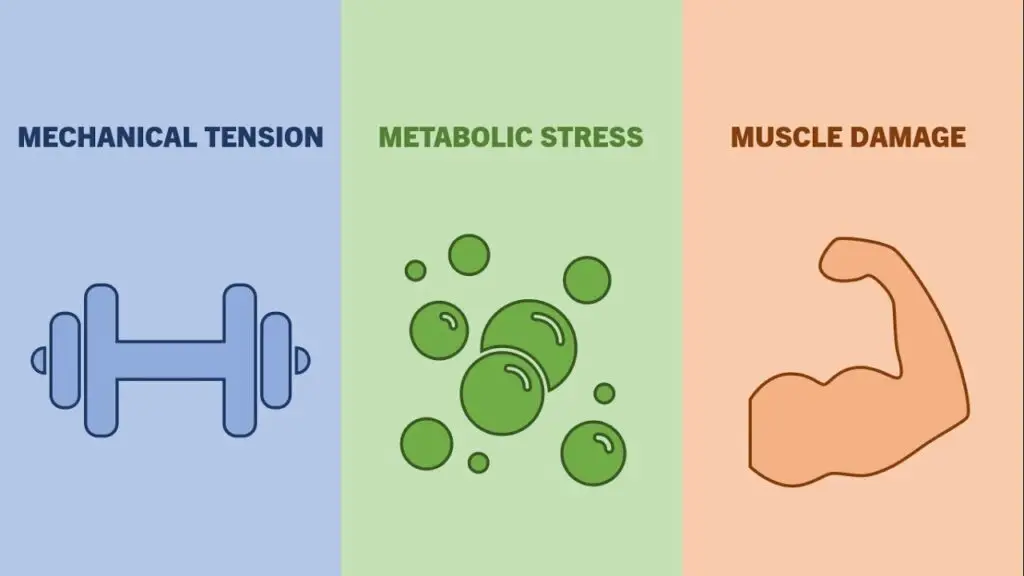
5. Recovery & Adaptation
5.1 How Recovery Works
Recovery is the process by which the body repairs itself after exercise or physical exertion. It involves muscle repair, replenishment of energy stores, and restoration of metabolic balance. During recovery, the body clears waste products like lactic acid, restores glycogen levels, and repairs muscle fibers that were broken down during exercise.
This process is supported by factors such as rest, proper nutrition, hydration, and sleep. As the body heals, it becomes stronger and more resilient, allowing for improved performance in future workouts or activities.
5.2 Role of Satellite Cells
Satellite cells play a crucial role in muscle recovery and growth by acting as muscle stem cells. When muscle fibers are damaged during exercise, satellite cells are activated, proliferate, and fuse to existing fibers, helping to repair and regenerate muscle tissue. This process supports muscle hypertrophy (growth) and enhances strength over time.
5.3 Heat Production in Recovery
Heat production in recovery is a vital aspect of the body’s return to homeostasis following physical exertion. It involves metabolic processes like muscle repair, nutrient digestion, and hormone regulation, all of which contribute to increased energy expenditure and heat generation. Managing recovery effectively through hydration, nutrition, and optimal recovery strategies helps the body cool down and repair without excessive thermogenesis, which could lead to fatigue or overtraining.
6. Nutritional Recommendations
6.1 Macronutrients for Muscle Growth
| Goal | Carbohydrates | Protein | Fats |
|---|---|---|---|
| General Health | 45-65% of total calories | 10-35% of total calories | 20-35% of total calories |
| Weight Loss | 30-45% of total calories | 25-30% of total calories | 25-35% of total calories |
| Muscle Gain | 40-60% of total calories | 25-35% of total calories | 15-30% of total calories |
| Endurance Training | 55-70% of total calories | 10-20% of total calories | 15-30% of total calories |
| Body Recomposition | 30-40% of total calories | 30-40% of total calories | 20-30% of total calories |
6.2 Micronutrients & Their Roles
| Micronutrient | Primary Function | Effectiveness in Muscle Growth & Performance |
|---|---|---|
| Calcium (Ca) | Muscle contraction, nerve signaling, bone strength | High – Essential for actin-myosin binding, impacting force production. |
| Magnesium (Mg) | ATP production, muscle relaxation, enzyme activation | High – Crucial for recovery, reduces cramping, enhances endurance. |
| Zinc (Zn) | Protein synthesis, immune function, hormone regulation | Moderate-High – Supports testosterone levels, muscle repair, and recovery. |
| Iron (Fe) | Oxygen transport via hemoglobin & myoglobin | High – Essential for endurance, prevents fatigue, supports ATP production. |
| Sodium (Na) | Electrolyte balance, nerve signaling, hydration | Moderate – Affects muscle contraction and endurance but needs balance. |
| Potassium (K) | Fluid balance, nerve impulses, muscle contractions | Moderate-High – Helps prevent cramping, enhances recovery. |
| Phosphorus (P) | ATP production, bone health, energy metabolism | Moderate – Supports energy production, but usually sufficient in diet. |
| Vitamin D | Calcium absorption, bone strength, muscle function | High – Enhances strength, hormone production, and recovery. |
| B Vitamins | Energy metabolism, red blood cell production, recovery | Moderate-High – Supports endurance, reduces fatigue. |
| Vitamin C | Collagen synthesis, antioxidant, recovery aid | Moderate – Supports connective tissue health and reduces oxidative stress. |
7. Training Strategies for Optimal Hypertrophy
7.1 Strength-Focused Training
Heavy compound lifts (80-90% 1RM)
Low reps (3-6)
Long rest (2-4 minutes)
7.2 Hypertrophy-Focused Training
Moderate weight (65-80% 1RM)
Higher reps (6-12)
Shorter rest (30-90 seconds)
7.3 Lengthened Partial Reps & Isometrics
Lengthened Partials: Target peak tension in stretched positions, maximizing hypertrophy.
Isometric Holds: Increase time under tension, reinforcing neural drive.
7.4 Eccentric Training & Tempo Control
Slow eccentrics (3-5 seconds) amplify muscle damage and stimulate greater repair.
Controlled concentrics improve force output and neural efficiency.
8. Future Directions & Unexplored Frontiers
8.1 Potential of Sarcoplasmic Expansion
Research suggests increasing intracellular fluid may enhance nutrient storage and muscle density beyond traditional hypertrophy models.
8.2 Neural Efficiency in Strength Gains
Investigating how advanced neural adaptations can optimize strength and power output for elite performance.
8.3 Muscle Elasticity & Performance
Emerging studies on titin suggest it may actively contribute to force output, rather than just passive tension.
9. Conclusion
Maximizing muscle growth requires a combination of mechanical tension, metabolic stress, neuromuscular adaptation, and strategic recovery. Training methods must be tailored to individual goals, whether focused on strength, hypertrophy, or endurance. By optimizing nutrition, recovery, and training variables, athletes can push the limits of muscle development.
Why Learning Muscle Science is Crucial for Your Fitness Journey
If you’re looking to get stronger, build muscle, or improve your overall fitness? Understanding the science behind muscles is the key to achieving these goals effectively and sustainably. Muscle science goes beyond just lifting weights—it’s about knowing how your body works, preventing injuries, and maximizing results. Here’s why learning muscle science is essential for anyone serious about fitness.
Optimize Your Workouts with Knowledge
Target Specific Muscle Groups
Understanding how muscles function helps you choose the best exercises for each group. For example, squats are ideal for strengthening the quadriceps, glutes, and hamstrings.
Save Time, See Results
Knowing concepts like progressive overload and muscle fiber activation ensures your workouts are efficient and productive.
Train Smarter, Not Harder
Muscle science helps you customize your routine based on your goals, whether you want to build size, strength, or endurance.
Prevent Injuries and Stay in the Game
Master Proper Form
Learning the biomechanics of exercises reduces the risk of injuries caused by poor technique.
Fix Muscle Imbalances
Muscle science helps you identify and correct weaknesses that could lead to long-term problems.
Promote Recovery
Knowledge about muscle repair teaches you the importance of rest days, stretching, and recovery tools like foam rolling.
Improve Your Overall Health
Boost Your Metabolism
Did you know that muscles burn more calories than fat even at rest? Building muscle can help you manage weight effectively.
Age Gracefully
Maintaining muscle mass as you age is critical for preventing falls, maintaining mobility, and reducing the risk of chronic illnesses.
Hormonal Benefits
Resistance training impacts hormones like testosterone and growth hormone. Muscle science helps you optimize these effects naturally.
Gain Lasting Motivation
Appreciate Your Body’s Complexity
Learning about protein synthesis, muscle fibers, and neural activation creates a deeper appreciation for what your body does every day.
Set Realistic Expectations
Muscle growth takes time. Knowing the science behind it keeps you patient and motivated as you work toward your goals.
Celebrate Progress
Tracking strength gains or muscle size becomes even more rewarding when you understand the science behind your improvements.
Master Your Nutrition for Muscle Growth
Fuel Your Body Right
Muscle science shows the importance of protein, carbohydrates, and fats for recovery and growth.
Choose the Right Supplements
Whether it’s creatine, branched-chain amino acids (BCAAs), or whey protein, understanding how supplements work helps you make smart decisions.
Optimize Timing
Learn when to eat for the best results—like having protein and carbs post-workout to enhance recovery.
Build Confidence and Empower Yourself
Avoid Fitness Myths
Understanding muscle science helps you separate fact from fiction, giving you confidence in your workout and nutrition choices.
Adapt to Challenges
Plateaus, injuries, or life changes won’t derail you when you understand the science behind overcoming them.
Help Others
Sharing your knowledge about muscle science can inspire and guide others on their fitness journeys. Help others reach where you are now!
Did I Miss Anything Important?
Learning the science behind muscles transforms your fitness journey. It’s not just about working out; it’s about working out smarter, achieving new goals and being the best version of yourself you can be! What are you waiting for? Go use this knowledge, teach it to other people, and work as hard as you possibly can because that’s how you can take control of your life and become better!
Trending Articles:
Do you have any questions?


